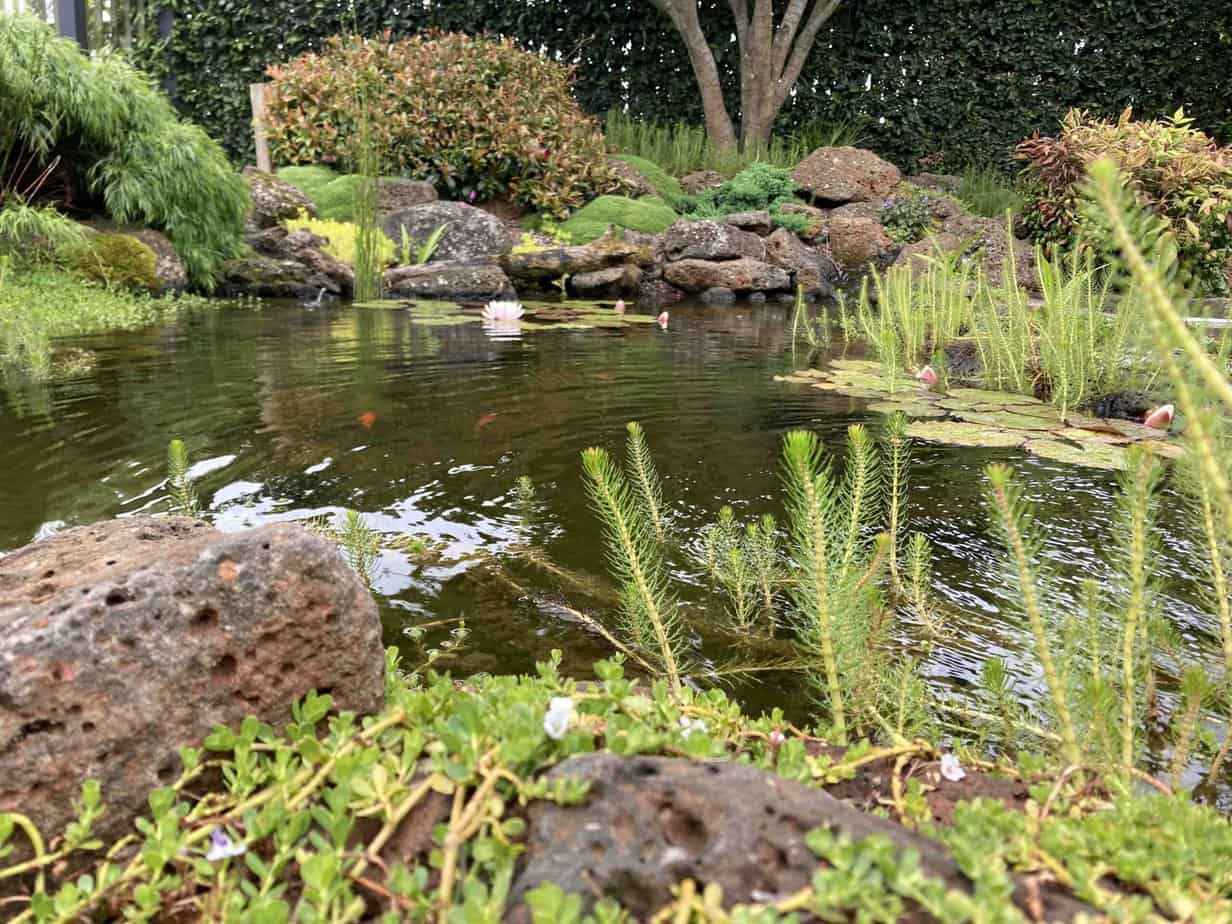In the realm of pond keeping, maintaining water clarity and quality can often be a daunting task. However, with the right filtration system, this challenge becomes more manageable.
Enter the DIY bog filter—a cost-effective solution that promises efficient water purification and easy maintenance.
In this guide, I’ll delve into the step-by-step process of creating and plumbing up a bog filter using readily available materials.
You can either read this post or watch the video I made.
Why Choose a Bog Filter?
When it comes to maintaining a pond, the filtration system plays a crucial role in ensuring the water remains clean and healthy for its inhabitants. Among the various filtration options available, a bog filter stands out for several compelling reasons.
Firstly, bog filters offer a natural and sustainable approach to water purification. Modeled after the natural processes found in wetlands and bogs, these filters replicate nature’s own methods of water cleansing.
By allowing water to flow slowly through layers of gravel, rocks, and plants, bog filters facilitate the removal of solid waste and harmful nutrients, resulting in clear and pristine water.
Moreover, bog filters are remarkably easy to construct and maintain, making them an ideal choice for both beginners and experienced pond keepers.
Unlike complex filtration systems that require frequent monitoring and expensive equipment, bog filters can be assembled using simple, affordable materials such as barrels, pond liner, PVC pipes, and gravel.
Their straightforward design makes them accessible to anyone interested in pond maintenance, regardless of their skill level or budget constraints.
Another advantage of bog filters is their versatility and scalability. Whether you have a small backyard pond or a large water feature, bog filters can be customised to suit your specific needs. Here’s a video showing how I built a much larger bog for my dream pond.
By adjusting the size and configuration of the filter, you can accommodate varying water volumes and fish populations, ensuring optimal filtration efficiency.
Additionally, bog filters can be easily integrated into existing pond setups or incorporated into new pond designs, offering flexibility and adaptability to changing requirements.
In addition to their practical benefits, bog filters also contribute to the overall aesthetic appeal of your pond. With the addition of aquatic plants and natural materials, bog filters create a visually appealing ecosystem that enhances the beauty of your outdoor space.
From lush greenery to cascading waterfalls, bog filters can be tailored to reflect your personal style and preferences, transforming your pond into a captivating focal point for relaxation and enjoyment.
Below is a video showing a pond I built using the bog filter in a barrel design.
Materials and Tools Needed
Materials:
- Watertight container (e.g., half an old olive barrel)
- PVC pressure pipe (outflow must be larger than inflow)
- Two T-piece fittings
- Two uni-seals
- Elbow fittings
- Two ball valves
- Plumbers glue
- Rocks and gravel (for filtration media)
- Plants with shallow root systems (e.g., Bacopa)
Tools:
- Drill
- Hole saw (44mm hole-saw for 25mm uni-seals)
- PVC glue
- Hacksaw
- Soapy water (for lubricating pipe insertion)
- Rubber mallet
Step-by-Step Guide to Building the Bog Filter in a Barrel
Select a water tight container that will become the bog filter. It’s important that the container is the right size for your pond. If you are unsure on the appropriate size for your bog filter you will find my pond formulas download helpful. This will also teach you how to size the pump for your filter.
Or read my article on sizing a bog filter.
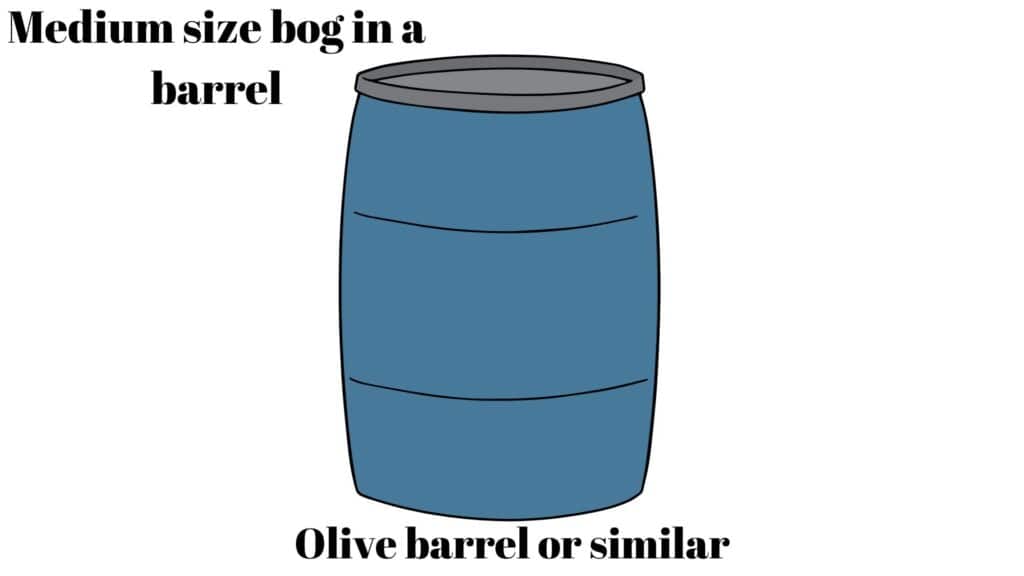
For this article I am using an old olive barrel. The top section I will cut off.
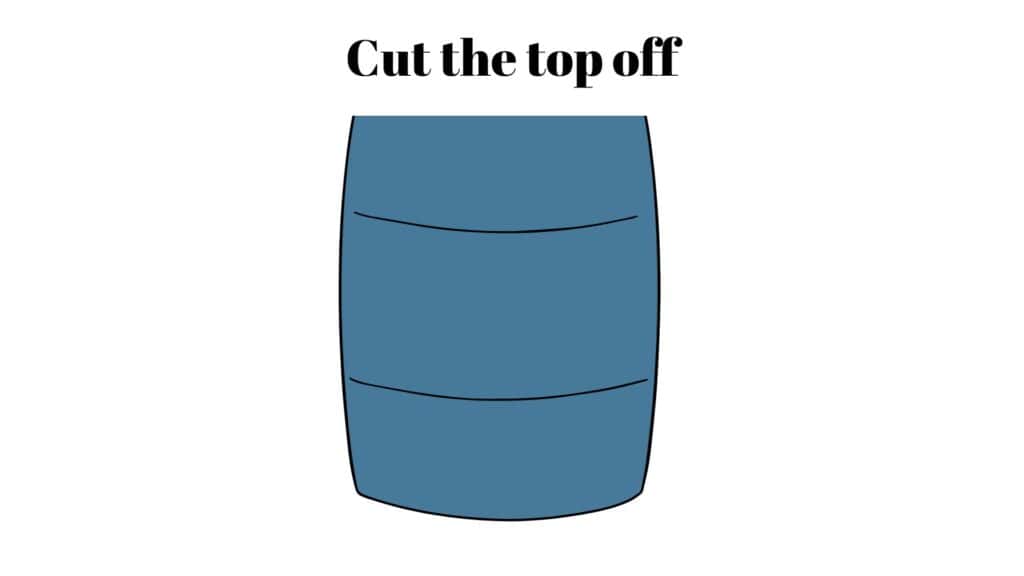
Next I drill holes to fit the uni-seals. These create a watertight seal in the container, while allowing the pipe to pass through.
For the clean-out valve I used a 25mm (1″) uni-seal and connected 25mm pressure pipe and balls valve. The ball valve is glued to the pressure pipe using plumbers glue.
For the overflow I would use a 50mm (2″) uni-seal and pressure pipe. The overflow must be larger than the inflow. I’ll be using a 25mm pipe for the inflow.
While I’m using pressure pipe, this isn’t necessary. I’m just using it because I have it on hand. Always check the sizing of the pipe diameter when ordering uni-seals.
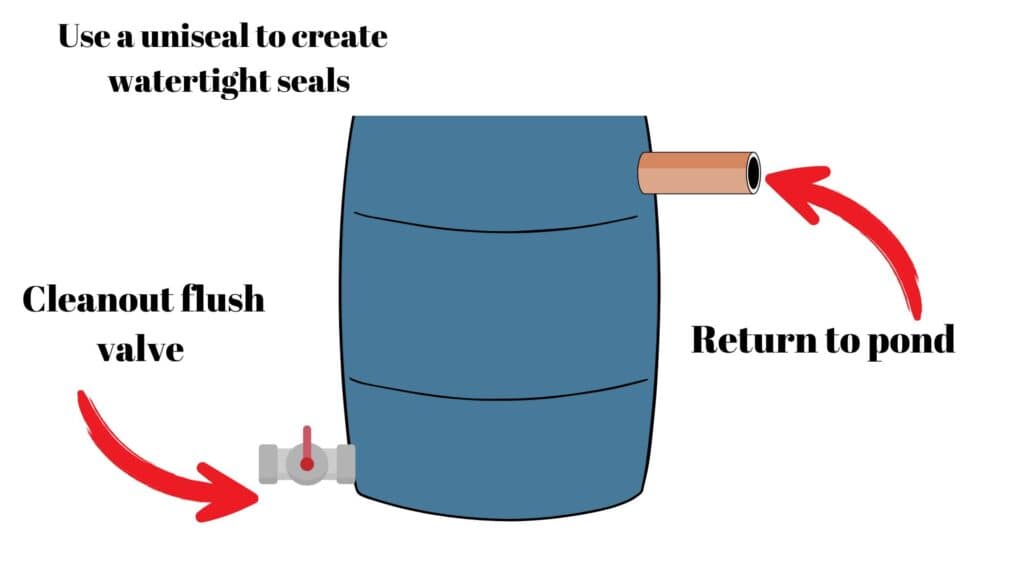
To bring water into the filter the inflow is connected to your pump and the pipe should come in over the top of the container.
We add a breather hole to prevent siphoning if the pump shut off. Without the breather hole if the pump stops the filter would siphon back into the pond.
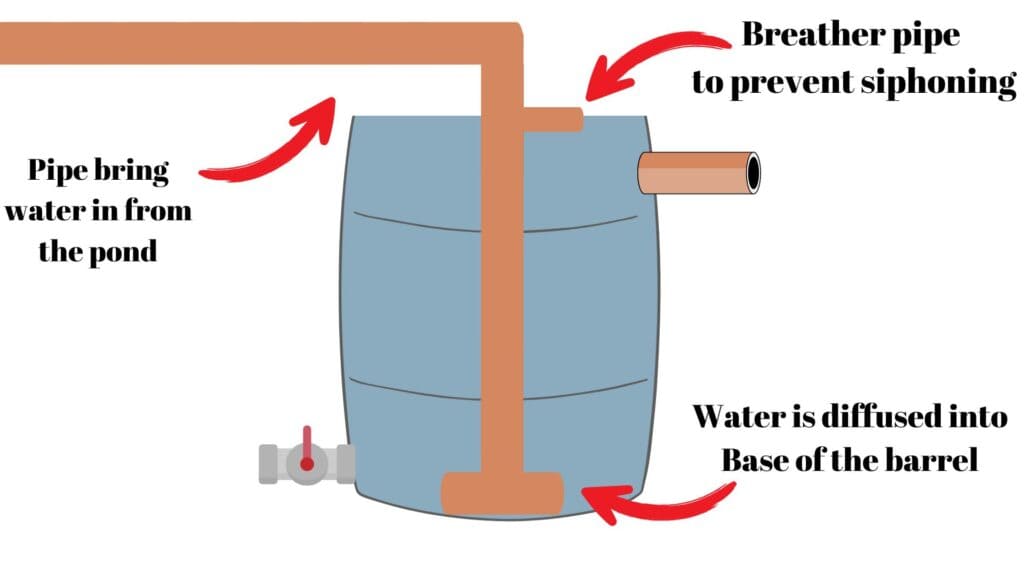
I made a video that talks about the breather hole and why it’s important if you want to take a look.
You use one T-piece fitting to create the breather hole and I like to add a valve so I can regulate flow. The other T-piece fitting can be used the the base of the filter to help evenly disperse the water.
Rocks are then stacked inside the filter. First larger melon sized rocks at the base, then lemon sized in the middle and then 20mm (3/4″) pebble on top.
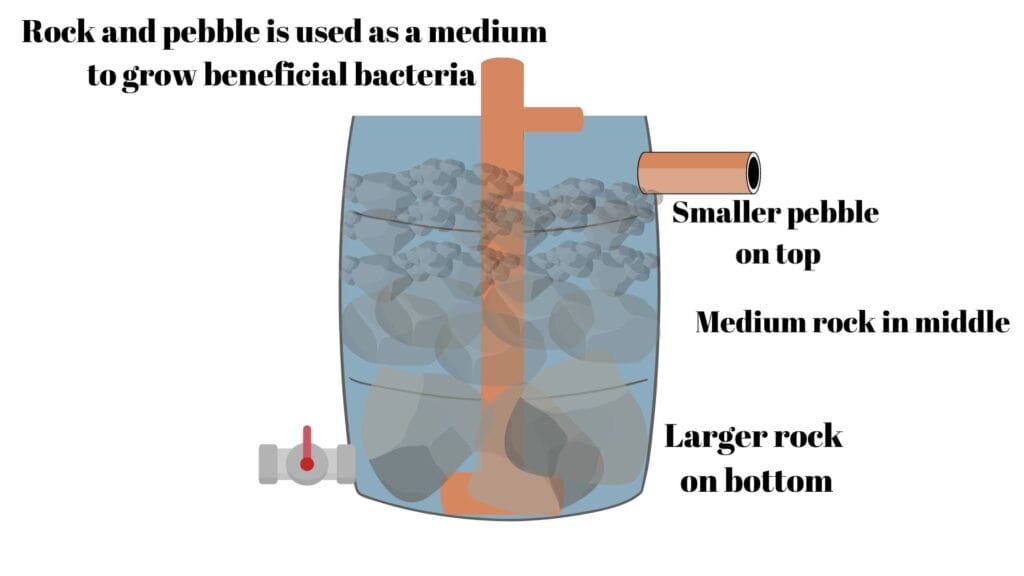
Now the pump can be connected and turned on.
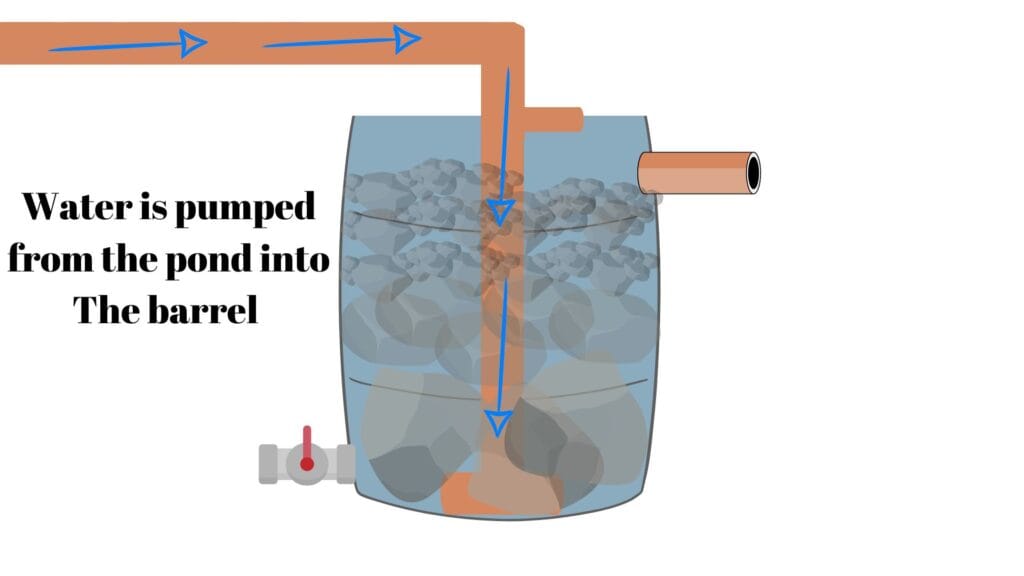
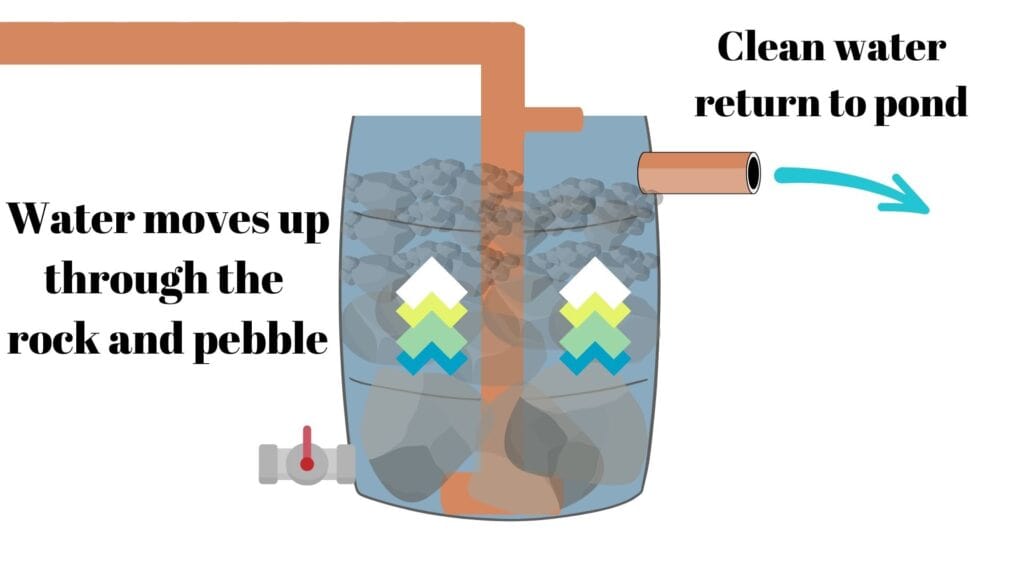
You can get quite creative with how you want to hide the filter. In the video I linked near the top of this page, I buried the filter inside the berm. The filter spills into a small stream that then cascades back into the pond.
Incorporating Plants
Adding plants to your bog filter is not just about enhancing its visual appeal; it’s a useful component of creating a balanced and healthy aquatic ecosystem.
Aquatic plants play a role in water filtration by absorbing excess nutrients, providing oxygen, and creating habitat for beneficial bacteria.
When selecting plants for your bog filter, it’s a good idea to choose species with shallow root systems that won’t clog the filter or impede water flow.
Below is a video I created: on plants for a bog filter.
Understanding Water Flow
This bog filter operates on the principle of up-flow filtration, where water is discharged into the bottom of the filter and gradually rises to the top.
This slow, upward movement allows solid particles to settle at the bottom of the filter while allowing clean water to escape back into the pond. To achieve optimal filtration, it’s essential to regulate the flow rate of water through the filter.
One way to control water flow is by selecting an appropriately sized pump for your pond. The pump’s capacity should be proportional to the size of the filter and the volume of water in your pond.
A pump that moves water too quickly can disrupt the settling process and reduce filtration efficiency, while a pump that moves water too slowly may not adequately circulate water through the filter media.
I like to size the pump at 6 times the empty volume of the bog. So if this barrel was 200 litres (approx. 50 gal), I would select a pump with a pumping volume of around 1200 litres (300 gal).
Conclusion
In summary, constructing a bog filter offers pond enthusiasts a cost-effective, efficient, and environmentally friendly solution for maintaining water quality and clarity.
By replicating the natural processes found in wetlands and bogs, bog filters provide a sustainable method of water purification that benefits both pond inhabitants and the surrounding ecosystem.
I hope this post and my youtube videos have been helpful. Good luck with your pond project!

